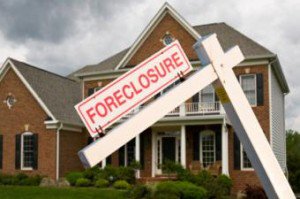 The industry will be keeping a close eye on the national foreclosure inventory rate with the release of CoreLogic’s November 2016 National Foreclosure Report, which will be released on Tuesday, January 10.
The industry will be keeping a close eye on the national foreclosure inventory rate with the release of CoreLogic’s November 2016 National Foreclosure Report, which will be released on Tuesday, January 10.
According to October’s report released last month, national foreclosure inventory fell 31.5 percent year over year–79 percent below the January 2011 peak
“Housing and labor markets improved over the past year, setting the stage for further declines in default rates across much of the nation,” says Anand Nallathambi, President and CEO of CoreLogic. “Home values posted an annual 5.8 percent rise through September in the CoreLogic Home Price Index, and payroll employment rose 2.4 million for the year through October.”
The October report also cited New Jersey and New York as the top two states with the highest foreclosure inventory as a percentage of mortgaged home with 2.8 percent and 2.7 percent, respectively. Hawaii (1.7 percent), Maine (1.7 percent), and Washington, D.C. (1.6 percent) rounded out the top five states with foreclosure inventory percentages all over 1.5 percent.
In contrast the five states with the lowest foreclosure inventory as a percentage of mortgaged homes all had a percent of 0.3. These states included Colorado, Michigan, and Utah.
Quicken Loans Home Price Perception Index and Home Value Index for December 2016, Tuesday, January 10
Will the gap between homeowner perceptions of what their homes are worth and appraisers’ evaluations close further in the Quicken Loans Home Price Perception Index (HPPI) for December, set to be released on Tuesday?
November’s HPPI displayed a sense of understanding between homeowners and appraisers as they work together to get the best value for their homes. The National HPPI displayed that the average owner’s estimate of value was 1 percent lower than the appraiser's perspective.
Bob Walters, Chief Economist for Quicken Loans, shared that homeowners and appraisers are slowly coming to an agreement, and are eager to work together to get the best price for the homeowners’ property. “The HPPI compares the perceived gap between the homeowner and the appraiser’s opinion of a home’s value and has provided an intriguing look into the psychographics of our housing market,” he said. “The most recent HPPI indicates homeowners and appraisers are closer to agreeing at the end of 2016 than they were at the start of the new year. It’s our hope that with this information the only surprises this holiday season are the ones wrapped under the tree.”
The West Coast dominated home value growth in the last report, with an approximately 7.23 percent increase in 2016. The top five metro areas with the most HPPI growth were Denver (+3.10 percent), San Francisco (+2.19 percent), Portland (+2.12 percent), Dallas (+1.94 percent), and San Jose (+1.69 percent). Will the west remain on top or will another region rise gain momentum?
Despite some monthly variations, appraisal values measured by the Quicken's National Home Value Index (HVI) have been rising throughout 2016, with home values rising 5.54 percent since January. The average appraiser valuation increased 0.42 percent and 5.28 percent year-over-year in November.
This Week’s Schedule
Tuesday, January 10
CoreLogic National Foreclosure Report for November 2016
Quicken Loans Home Price Perception Index and Home Value Index for December 2016
Friday, January 13
University of Michigan Consumer Sentiment Index for January 2017

 DSNews The homepage of the servicing industry
DSNews The homepage of the servicing industry










